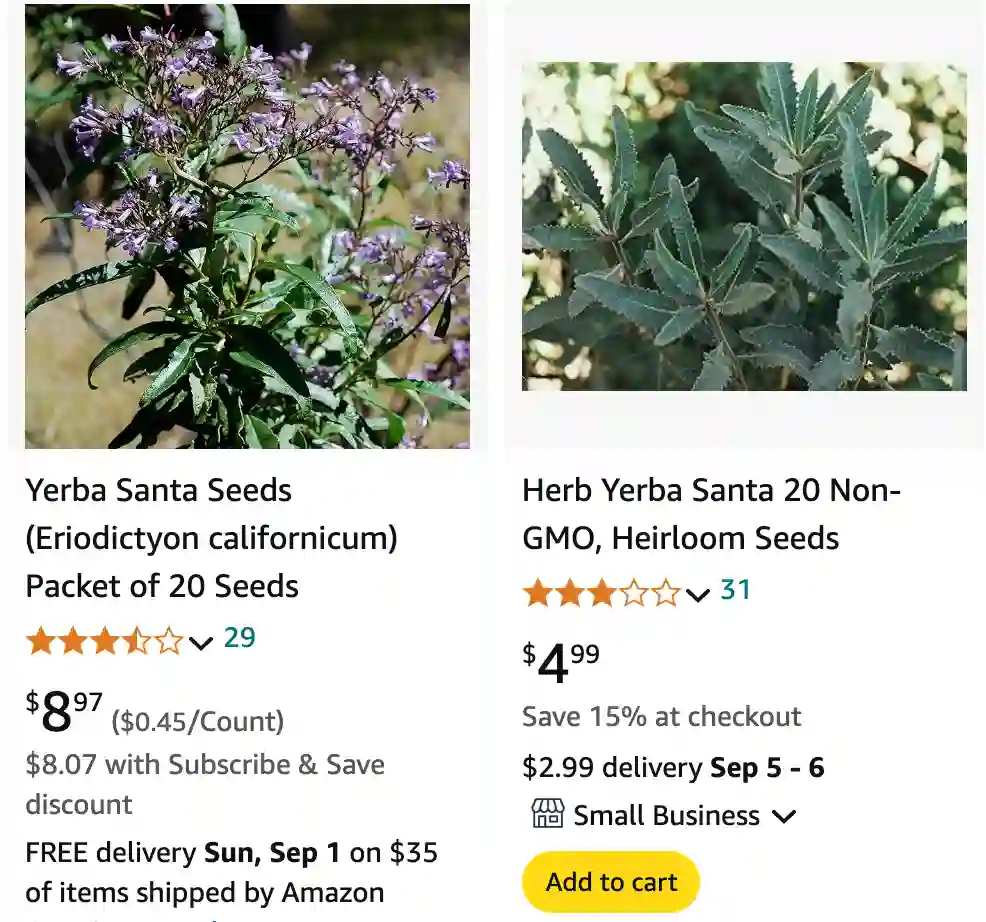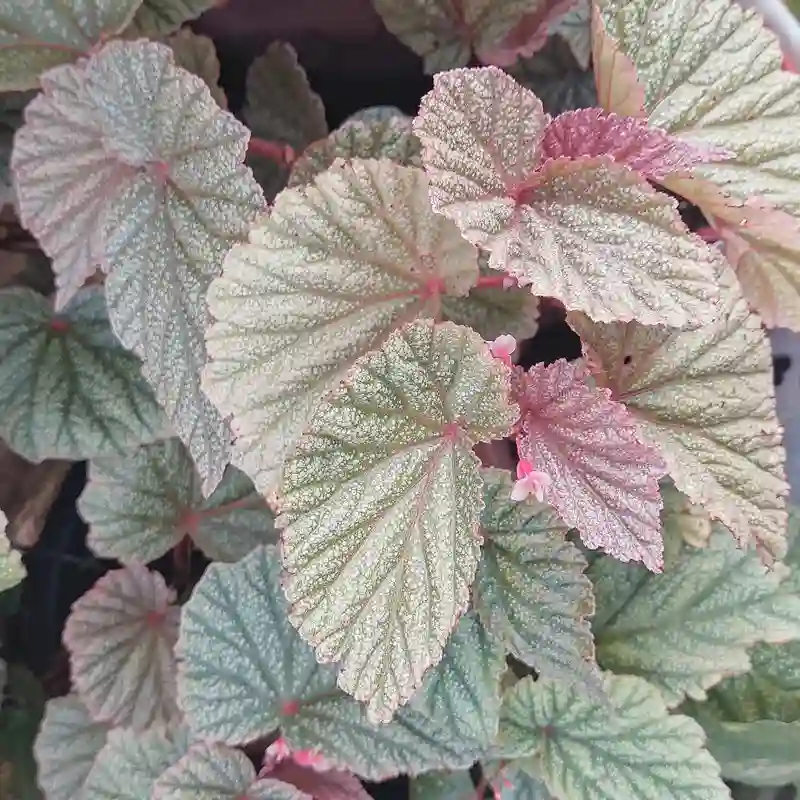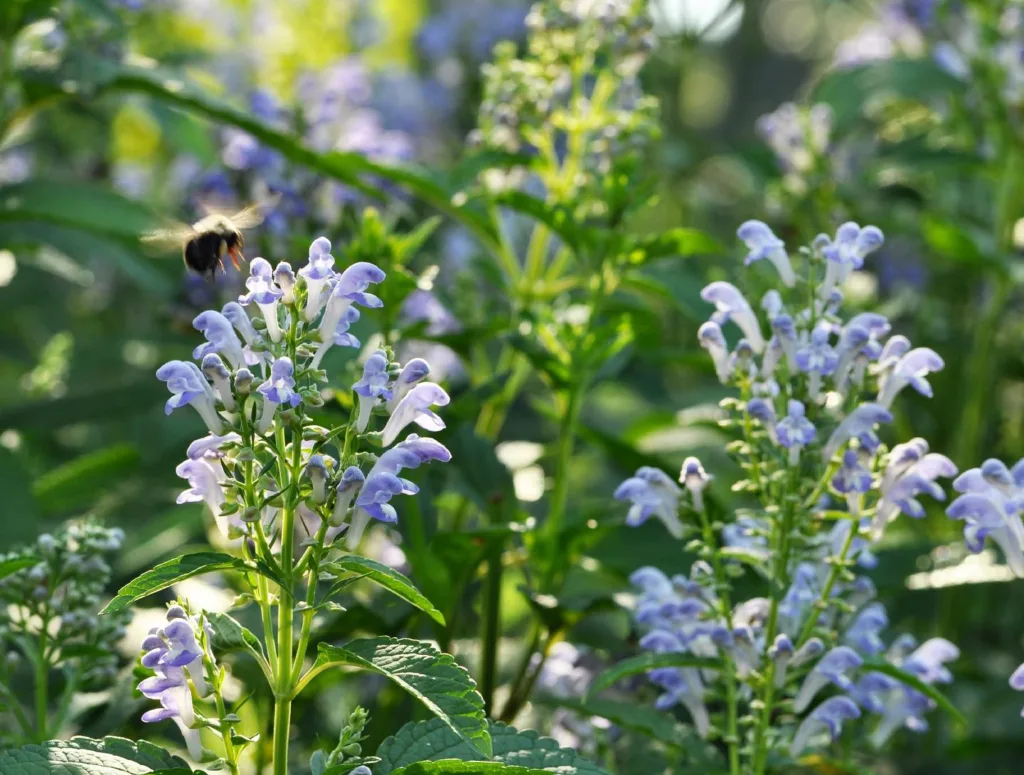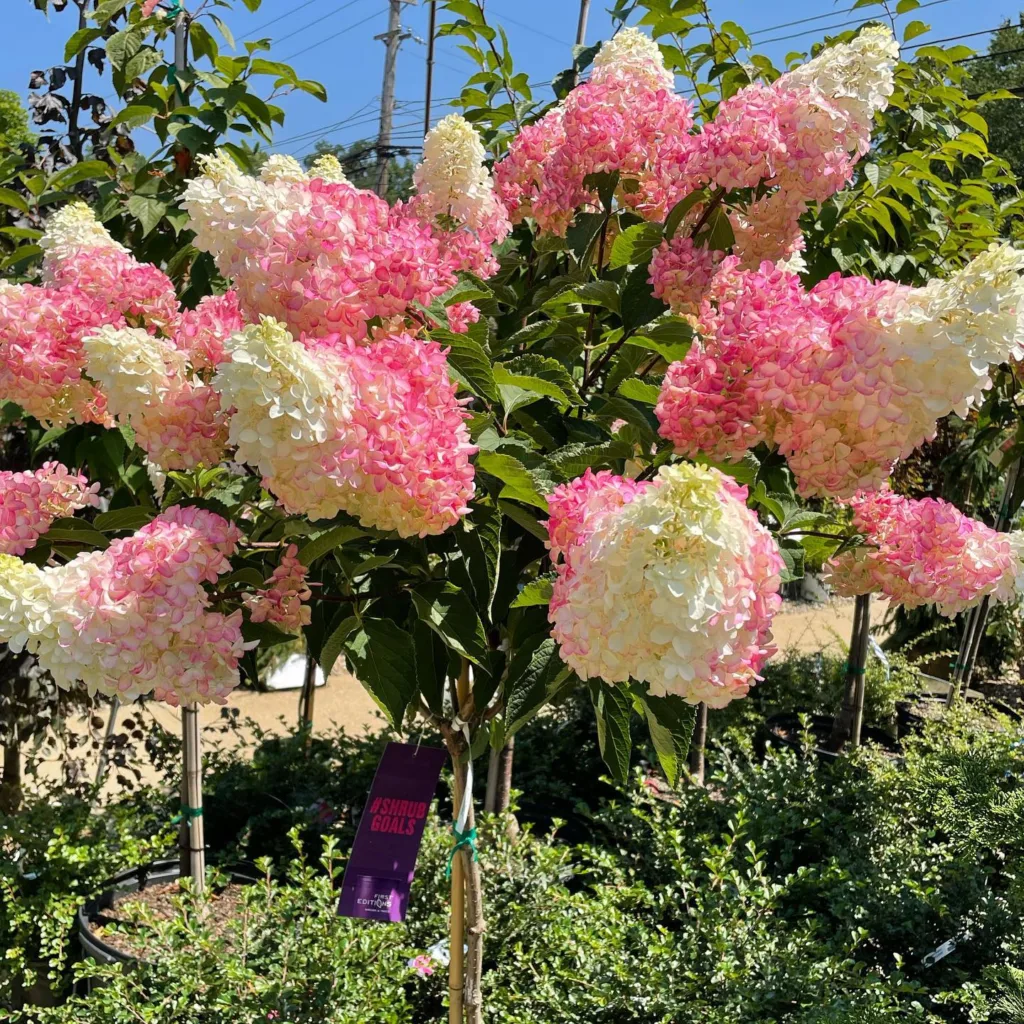
What is Yerba Santa?
Yerba Santa, also known as Eriodictyon Californicum, belong to the Boraginaceae family, is a plant native to the southwestern United States and northern Mexico. It’s often recognized for its aromatic leaves and has a rich history of use in traditional medicine and spiritual practices. The name “Yerba Santa” translates to “Holy Herb” in Spanish, reflecting its revered status among indigenous peoples.
Plant Family: 153 Genera in Boraginaceae
What is Yerba Santa Sage Used For?
Yerba Santa is used for various purposes, primarily in traditional medicine and spiritual practices. It’s known for its respiratory benefits, often used to treat coughs, colds, and congestion. Its leaves are commonly brewed into teas or made into tinctures for their expectorant and anti-inflammatory properties. In spiritual contexts, Yerba Santa is used in smudging ceremonies to cleanse spaces and individuals of negative energy.
Can You Smoke Yerba Santa?
Yes, you can smoke Yerba Santa. Traditionally, it’s used in smudging rituals where the smoke is believed to purify and protect. The practice involves burning the dried leaves and inhaling the smoke, which is thought to offer both physical and spiritual benefits. However, smoking any herb can have health risks, so it’s important to use it mindfully and be aware of any potential impacts on your respiratory system.
How to Burn Yerba Santa?
Burning Yerba Santa is similar to burning sage. To do this, you’ll need dried Yerba Santa leaves or bundles. Light the end of the bundle with a match or lighter, allow it to catch fire, and then blow out the flame to let the embers smolder. You can use the smoke to cleanse a room or a person by wafting it around. Ensure you’re in a well-ventilated area and never leave burning herbs unattended.
How to Grow Yerba Santa?
Growing Yerba Santa requires a bit of attention but can be quite rewarding. This plant prefers well-drained soil and plenty of sunlight. It thrives in USDA hardiness zones 7 to 10. Start by planting seeds or young plants in a sunny spot with good drainage. Water them moderately, allowing the soil to dry out between waterings. Yerba Santa is drought-tolerant once established, making it a low-maintenance option for gardens in arid climates.
Is Yerba Santa Edible?
While Yerba Santa has medicinal properties, it’s not typically consumed as food. Its primary use is in teas, tinctures, and smudging. The leaves are known for their bitter taste and are used more for their therapeutic benefits rather than as an edible plant.
Is Yerba Santa Sage?
Yerba Santa is often confused with sage due to its similar uses in smudging and traditional medicine. However, it is not the same as the common garden sage (Salvia officinalis). While both plants are used in spiritual practices and for their medicinal properties, Yerba Santa belongs to the borage family, while sage is a member of the mint family.
Is Yerba Santa the Same as Yerba Mate?
No, Yerba Santa is not the same as Yerba Mate (Ilex paraguariensis). Yerba Mate is a South American plant used to make a stimulating tea known for its caffeine content. Yerba Santa, on the other hand, is used primarily for its medicinal and spiritual benefits and does not contain caffeine.
What Does Yerba Santa Look Like?
Yerba Santa is a bushy shrub with thick, leathery leaves that are covered in fine, soft hairs. The leaves are usually dark green and can have a slightly silvery appearance. During the spring, the plant produces small, tubular flowers that range from lavender to white, adding a delicate touch to its overall appearance.
What Does Yerba Santa Smell Like?
The aroma of Yerba Santa is quite distinctive. The leaves have a strong, resinous scent that is somewhat herbal and earthy. This scent is often described as a combination of eucalyptus and pine, which can be quite invigorating or soothing depending on individual preferences.
Yerba Santa vs Sage
While Yerba Santa and sage share some similarities in their uses, they are different plants. Sage, particularly white sage (Salvia apiana), is more commonly known for its use in smudging and has a strong, distinct aroma. Yerba Santa, while also used in smudging, has a resinous, earthy smell and is valued more for its medicinal properties. The two plants are often used interchangeably in spiritual practices, but their distinct scents and effects can offer different experiences.
Yerba Santa vs White Sage
White sage and Yerba Santa are both used in smudging ceremonies but have different characteristics. White sage has a potent, cleansing aroma and is highly regarded in many Native American traditions for its spiritual and purifying qualities. Yerba Santa, on the other hand, has a milder, more resinous scent and is often used for respiratory issues. Both plants play important roles in various cultural practices, but their uses and scents cater to different needs.
Yerba Santa vs Yerba Mate
Yerba Santa and Yerba Mate are distinct plants with different purposes. Yerba Mate is consumed as a caffeinated beverage and is known for its stimulating effects. Yerba Santa is used more for its medicinal properties and in spiritual rituals. They come from different plant families and have different benefits, making them suitable for various uses depending on what you’re looking for.
Additional Considerations
How to Care for Yerba Santa
Yerba Santa requires minimal care once established. It prefers well-drained soil and full sunlight. Prune it periodically to maintain its shape and encourage new growth. During dry periods, water it moderately. Avoid overwatering, as Yerba Santa is drought-tolerant and can suffer from root rot if left in soggy soil.
How to Propagate Yerba Santa
Yerba Santa can be propagated through seeds or cuttings. For seeds, sow them in well-drained soil and keep them in a warm, sunny location. For cuttings, take healthy, semi-hardwood stems and root them in a moist, well-draining medium. Both methods can be successful with proper care and attention.
What to Plant With Yerba Santa
Yerba Santa pairs well with other drought-tolerant plants such as lavender, rosemary, and succulents. Its resilience to dry conditions makes it a good companion for plants that thrive in similar environments.
Can You Grow Yerba Santa Indoors?
Growing Yerba Santa indoors can be challenging due to its preference for full sunlight and well-drained soil. However, if you have a bright, sunny window and can provide the right conditions, it is possible. Just be prepared for the plant’s size and potential need for space.
Is Yerba Santa Toxic?
Yerba Santa is generally considered safe for use, but like any herb, it should be used in moderation. If you have specific health conditions or are pregnant, consult with a healthcare provider before using Yerba Santa medicinally.
Common Problems
Yerba Santa may face issues like pest infestations or fungal diseases if conditions are not ideal. Ensure proper air circulation and avoid overwatering to prevent these problems. Regular inspection and maintenance can help keep your Yerba Santa healthy and thriving.
Conclusion
Yerba Santa is a versatile and intriguing plant with a rich history of use in both traditional medicine and spiritual practices. Understanding its various uses, characteristics, and care requirements can help you make the most of this unique herb. Whether you’re interested in its medicinal properties, spiritual uses, or simply growing it in your garden, Yerba Santa offers a range of benefits and applications.
If i die, water my plants!



